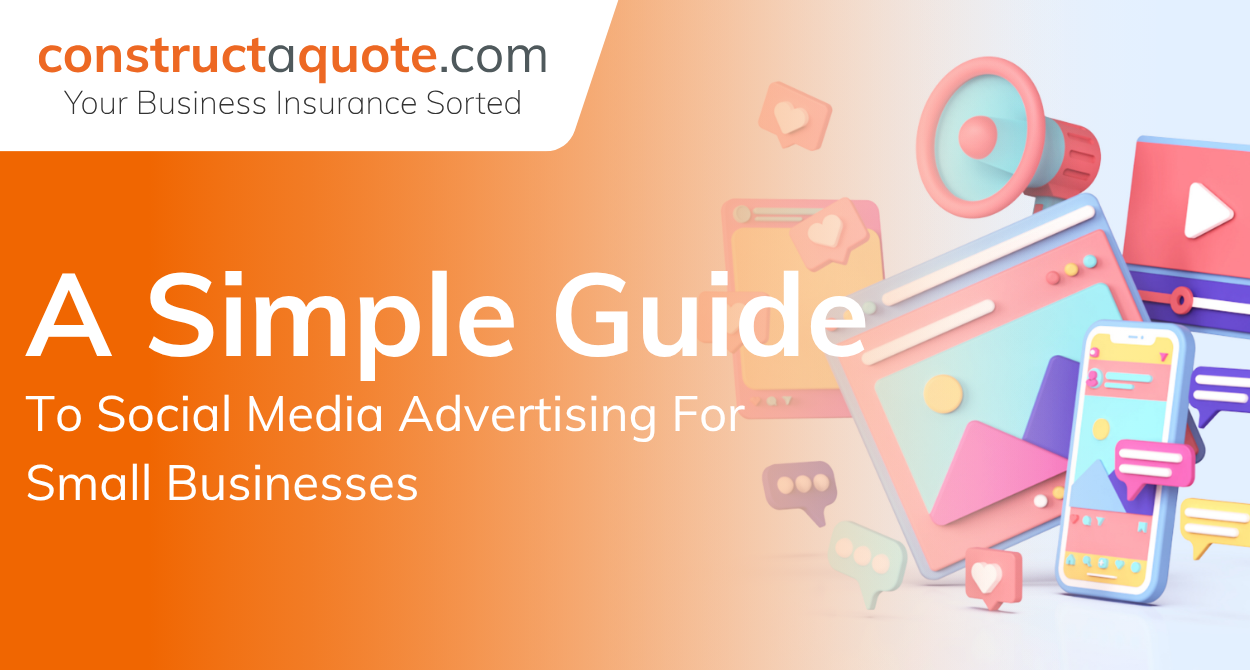by constructaquote - 27 December 2017


If social media were pointless, the biggest brands in the world would not be using it – but they are. In fact, they invest thousands of pounds in pulling together whole departments of experts to manage their social media profiles on their behalf.
Advertising on social media is a whole different ballgame. With Facebook, Twitter and Instagram making it increasingly difficult for potential customers to see your posts organically, you might not have a choice but to invest in social media advertising if you want to increase your following.
It’s worth doing – the more followers you have on social media, the more people you can market and advertise to for free by posting on your business page. Additionally, many clients come through word of mouth and recommendation, so it makes sense to put your brand in front of as many people as you can on social media.
Not everyone can afford to employ a team or spend thousands of pounds, but even if you’re a small business, you should be investing some time and money on advertising yourself on social media. To help, we’ve pulled together a simple guide to social media advertising for small business owners.
Are you speaking to the general public or to other businesses? This is really important. If you’re advertising to other businesses, then this can be difficult to do on Facebook, Twitter and Instagram, and you may be better off looking at advertising on LinkedIn. However, you can now target Facebook ad’s to an audience of a specific job category and annual income. If you’re looking to target the general public, then you need to first work out who it is you want to target. What is their age, gender and location? What are their interests? Who else might they be friends with?
Your target audience is not ‘everyone’. Work out who are the most likely people to buy your product from previous sales data or market research. Those are the people you should be investing money in advertising too.
You can’t plagiarise them, but you can learn from their years of testing. Have a look at the adverts your competitors run, especially if they are a few years ahead of you, and take inspiration from their work. Try and emulate them as best you can without flat out copying them. What do they do that works and how can you try something similar?
This is called A/B testing, and it’s vital. The ads should be targeting the same group of people, have the same budget and be running at the same time, but you may have used a different image or some slightly different wording. You might want to test the difference between the words ‘money’ and ‘funding’ for example, or maybe you have two core colours in your logo, and you want to test the primary colour as both. After a few weeks you are likely to see that one of these adverts has performed better than the other, so then you will be informed about terminology to move forward with. You can then implement the results of the A/B testing in other adverts.
It’s tempting to inundate people with lots of information about what you do and why you are the best, but remember that people respond much better to imagery. If you can produce a really great video or graphic, then it’s much better to invest a budget in advertising that than it is to try and push lots wording onto people.
You also need to bear in mind that Facebook will reject your advert if there is too much text on your image.
You should be producing a suite of adverts when you’re cross-platform advertising. Don’t produce one graphic that matches the Facebook size guide and then recycle it on Twitter, LinkedIn and Instagram. Each social media platform has different image specifications, and they’ll look unprofessional if you try and make them fit and you’ll find that you’re wasting money on ad’s that are not being successful. Your tone should change across each platform too, so you shouldn’t be using the same content across the board. However, there should be consistency across the adverts (the same colours, images, wording etc.).
Narrow your audience down as far as you can by age, gender, geographical area or interest. On Facebook and Instagram, you can target by job title, interests and even based on their friendship with someone with a particular interest. For example, if you sell gifts, you can target people who are friends of people who are engaged or have just had a baby. It’s vital you get this audience right. If you’re a restaurant in Leeds, there is no point in targeting people who work in London. If your targeting is set to everyone in the UK aged between 18 and 65, you are showing your advert to a lot of irrelevant people. Target people in Leeds and aged between 18 and 45 instead.
Using the previous example, if you’re advertising your lunchtime special you should be advertising in the morning and up until lunchtime is over. There’s no point in advertising your special at 9 o’clock at night. You can schedule your ads appropriately to make sure they are being shown at the most efficient times, such as during a morning commute or when most people are having their break at 11am.
This is a favourite on Facebook. If you’re going to invest your budget into advertising, then a good place to start is to advertise an offer or a competition. People are much more likely to engage with your advert this way. If you’re asking people to like your page and share your post, you’re putting your brand in front of even more eyes than your advertising budget is paying for. If you are running a competition then you need to make sure that your winner selection process is fair, unless you’re asking for people participate in something subjective like a ‘caption this image’ competition, in which case you get to choose your favourite. Don’t let friends or family members take part and win, though.
It is really important that you learn the basics of the figures you’re looking at so that you can figure out if your advert is working well or not. Here are some simple explanations:
Most social media platforms are set up so that it is relatively easy for anyone to use the advertising features, but you should progress with caution. They’re also how each of the platforms generates an income so make sure you don’t waste money. To do this, check your budgets are right so that they don’t run off in terms of spending and read the platform advertising guides online before you set off on your journey.
Check your campaigns regularly for results and spend and read the little information guides along the way if you aren’t sure what something means. If you’re at a complete loss at what to do, it’s worth looking for a social media advertising freelancer who can set everything up for you and knows what to look for regarding statistics. You’d have to pay them extra, but it will probably be worth the peace of mind and resulting success.
Have you go the right insurance in place for your small business or consultancy? Check out our popular products here…

by Charlotte Houghton - 7 October 2020
by constructaquote - 6 October 2020
by Charlotte Houghton - 29 September 2020
by Charlotte Houghton - 24 September 2020